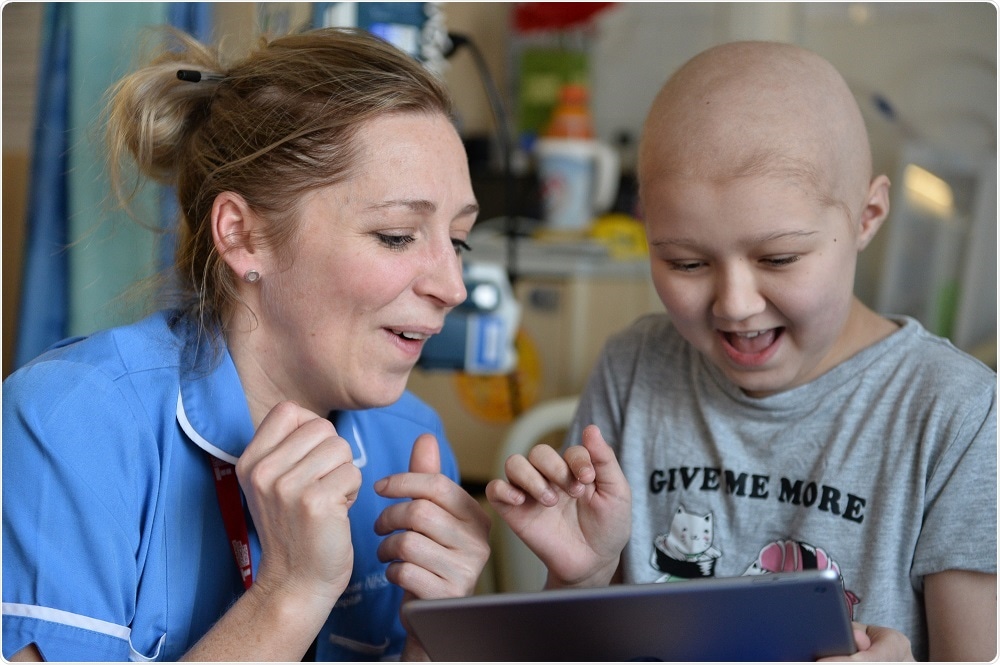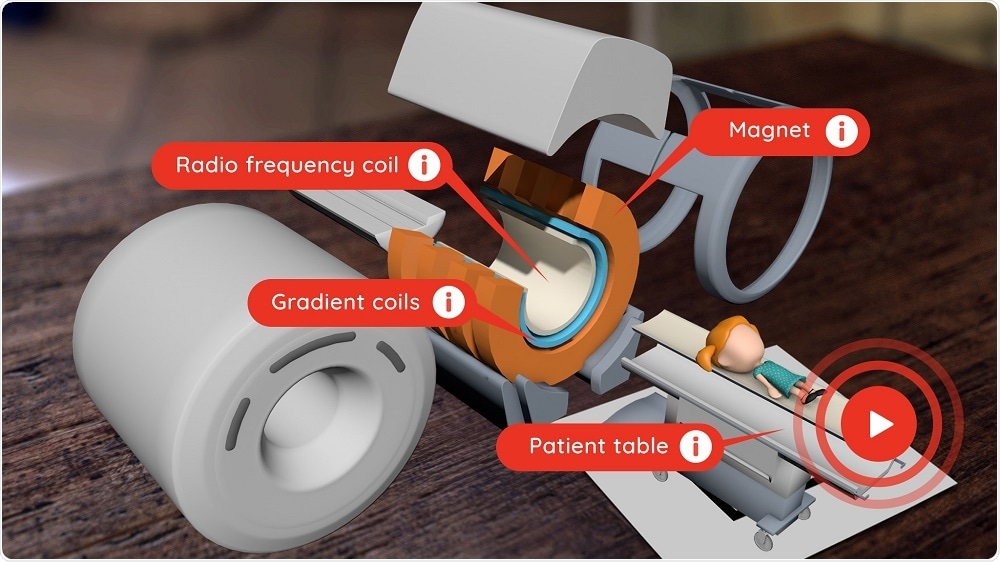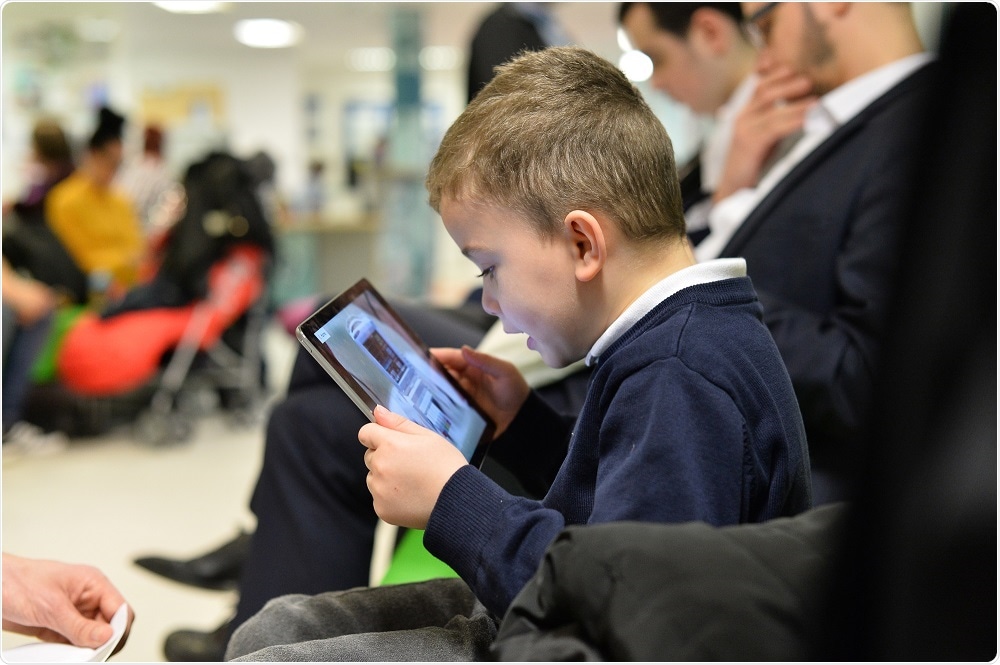
Xploro: Improving Child Health Literacy Through AI and AR
 Dom RabanManaging DirectorCorporation Pop
Dom RabanManaging DirectorCorporation PopAn interview with Dom Raban, conducted by Kate Anderton, BSc
What are the emotional challenges faced by children undergoing medical treatment?
There are quite a few; we know from the research base that children who are not well informed or poorly prepared for their medical treatment experience increased stress and anxiety, which we know leads to poorer health outcomes. Hospital stays can be a daunting experience for most, but it can be particularly stressful for children in an alien environment.
 Credit: Sutherland Labs
Credit: Sutherland LabsResearch evidence indicates that the stress and anxiety they experience is triggered by all sorts of things; the unfamiliarity of the environment, fear of medical examinations, dealing with a difficult diagnosis, worrying about pain and death, separation from their parents, uncertainty about what's going to happen, and a loss of control. Often, children are restrained when distressed to ensure that procedures are completed, which only enhances their anxiety.
Aside from affecting their stress levels, it causes procedures to take longer and increases costs. Along with the risk of behavioral/psychological problems, which can have a wide-ranging impact beyond the hospital experience, going to hospital presents a panoply of emotional challenges for children.
What are the current methods used by the NHS to explain medical procedures to children?
Play staff currently deliver explanations, but they are unable to visit every child as their time is limited. Parents also provide information, because what little resources hospitals do offer tend to be directed at parents rather than their children. The leaflets, DVDs, books, and other information provided is not usually in a particularly child-friendly form.
You could count on the fingers of one hand the few examples of hospitals beginning to use digital technologies to deliver information to children. But the technologies I’m aware of have been developed by individual hospitals, on a per-intervention basis. This means they're very costly to produce, and are not scalable because the solution is attached to a particular hospital.
Research indicates that when children source information, it’s usually from their friends, family, or the Internet, and that can lead to misinformation. There's definitely an information gap between what children need and what the NHS and other health services are delivering.
What challenges do healthcare providers face when supplying information about medical procedures to children?
Traditional channels- booklets, leaflets and magazines-are usually used to supply information. As these are costly, it is usually difficult to distribute these to all patients. Traditional media like books and leaflets also tend to wear quickly and get passed around, so money's invested in information resource, and almost instantly reinvested to replace the worn resources.
Frontline staff tasked with preparing children for procedures are fairly thinly spread which presents another challenge. There’s a disproportionate number of staff compared to the number of children going through hospitals, so they don’t have sufficient time or resources to meet the needs of all the children.
Why do you think it is important that new methods of supplying information about medical procedures to children are introduced?
Health literacy is defined as the ability to understand health information and services and to use that knowledge to inform appropriate decisions, actions, and encounters with health professionals and health environments. This concept is central to our work.
Poor health literacy has been associated with poor engagement with health services, and it's really important that we encourage potential patients to engage with their own health so that they're better able to self-manage their healthcare. Research has shown that children with improved health literacy and a better understanding of what will happen have better outcomes.
New methods are important because traditional information channels like print and magazines, books, and even DVDs aren't native to a child's modern day experience, so utilizing apps and games is much more relatable for children.
That's how they interact with their devices daily, so whilst it's sad that books aren’t the default source for children, we have to accept that reality and deliver information through an app environment. We're talking to them in a domain that they interact with every day.
When Simon Stevens created the NHS Five Year Forward View plan in 2014, he said that there's a critical need for digital technologies to be exploited, as they offer a significant reduction in costs, a reduction in health professional and play staff time and appointment delays, and they provide greater accessibility for patients while meeting the needs of an increasingly technologically able child population.
Though the NHS is not implementing it to any great extent, this shows that they do acknowledge the importance of digital technologies in terms of delivering information to patients.
Please give an overview of Xploro.
The first thing a child does when interacting with the app is create an avatar, which is central to the thinking behind the app. After a number of customization processes, including naming their creation, they’re left with an avatar absolutely unique to them.
Through this process the child is able to create something that they feel belongs to them, and that avatar becomes their guide through the hospital process and is the conduit for the delivery of health service information.
Three main areas of the hospital experience are addressed in the app. It deals with understanding who all the people are, anticipating what the environments are going to be like, and understanding what the technology and processes are going to be like.
They’re introduced to interactive MRI scanners, bedside patient monitors, cannulas, or other pieces of medical equipment that they might come across, which they become familiar with through playing.
 Credit: Corporation Pop
Credit: Corporation PopThey’re shown different environments like a ward, an operating room, an anesthesia room and so on and so forth, and they can play with these in much the same way as they would play with the Sims. It's really confusing when children are confronted with people in white coats, green coats, blue coats, and a whole army of people and they have very little understanding as to who they are and what they do. The guide introduces them to each of the various hospital staff roles before they encounter them,
The guide crucially acts as an artificially intelligent conversational agent, allowing the child to have a conversational interaction with their guide. They can ask questions about when their next visitor is coming or what the Wi-Fi code is, or medical questions about what cancer is or why they require a blood test.
However, the guide's a bit more than a glorified FAQ. It can ask them to feedback how they're feeling and what their experience has been like. It works across three main technologies, and most are augmented reality models. Importantly, the conversational element educates children about some of the procedures that they're going to experience.
How does Xploro help children understand the medical treatments they will receive?
A key feature of our app is the focus on the pull rather than the push of information. This is the typical process with health information; you visit a hospital, where you might receive a diagnosis of one kind or another. Any information you’re given is presented as a big, thick leaflet full of technical terms, many of which you won't understand, and it's quite daunting and scary.
We want children to use this app to access information as and when they want to, and having fun in the process. By allowing children to interact with information in that way, we're not overpowering them with a whole range of information, some of which will be relevant and some of which won't.
Where did the idea for Xploro come from?
In 2011, when my daughter was 13, she was diagnosed with Ewing's Sarcoma, and she underwent a year of horrendous treatment involving 18 rounds of chemotherapy and god knows how many blood transfusions. During her treatment at six different hospitals, she experienced a failed stem cell harvest and 10 weeks of proton beam therapy.
The reason that she's fit and well today and studying at university is that the clinical care was second to none. But it made me acutely aware that her information needs just weren't being met, and the net effect on my daughter was that whilst the clinical care made her better, she felt disenfranchised from health services.
As I run a digital agency that makes apps, games, and software, I wanted to do something that responded to my daughter's experience, so the logical solution was to make an app.
Is there any evidence to support the use of Xploro in healthcare?
There’s a lot of research evidence on the benefits of providing information, not just to child patients but to any patients. Some demonstrates the positive impact that new technologies like augmented reality can have in a healthcare setting.
In terms of evidence around Xploro, the funding that we've currently got from Innovate UK and the Biomedical Research Council is going to fund a six-month independent trial in the autumn with a cohort of patients using the app and a cohort not using the app, which will hopefully demonstrate the clinical effectiveness of what we're doing.
 Credit: Sutherland Labs
Credit: Sutherland LabsWhat impact will Xploro have on the NHS? Do you think it could be applied worldwide? Do you think it could be applied to the adult population?
Essentially, we're building a platform that we intend to be used for any patient of any age with any condition anywhere, but we're starting with children.
We're focusing on eight to 14 year olds, because we think they are the most underserved in terms of information, and specifically children with a cancer diagnosis. This is partly because of my own experience and partly because it will enable us to perform a deep dive on a specific condition. We then plan to roll out versions of the app for other conditions, so there could be a diabetes version, a respiratory version and so on.
I'm hoping it'll have a big impact within the NHS, and we're already receiving a lot of interest from several hospitals and from leading charities. We're about a year away from release, and I’m hoping that by that time there'll be a big uptake across the NHS.
We plan to launch it simultaneously in the U.K. and the States, followed by a further rollout around English-speaking territories first, with other language versions following later. My personal goal and the reason why I'm doing all this alongside my day job of running a digital agency is that I want one and a half million children to benefit from using the app within the next five years. That's my target.
Where can readers find more information?
The app is still in the development phase, but Dom Raban is happy for people to contact him via LinkedIn. You can find out more about Corporation Pop on their website.
About Dom Raban
 Dom Raban has been creating ‘stuff’ for nearly 40 years, from punk fanzines in the 1970s to content for emerging technology platforms now. He’s been in the digital space since the start, building his first website in 1995 and his first 3D virtual environment in 1996.
Dom Raban has been creating ‘stuff’ for nearly 40 years, from punk fanzines in the 1970s to content for emerging technology platforms now. He’s been in the digital space since the start, building his first website in 1995 and his first 3D virtual environment in 1996.He is currently Managing Director of Corporation Pop, a digital innovation agency that specialises in the development of apps, games and software. They are particularly experienced in 3D immersive virtual environments and for the last three years have been bringing that specialism to virtual and augmented reality applications.
In 2011 Dom’s 13 year-old daughter was diagnosed with a serious illness and that experience has led him to develop ‘Xploro’ – a mobile application that aims to improve child health literacy through gameplay, augmented reality and artificial intelligence



































No hay comentarios:
Publicar un comentario